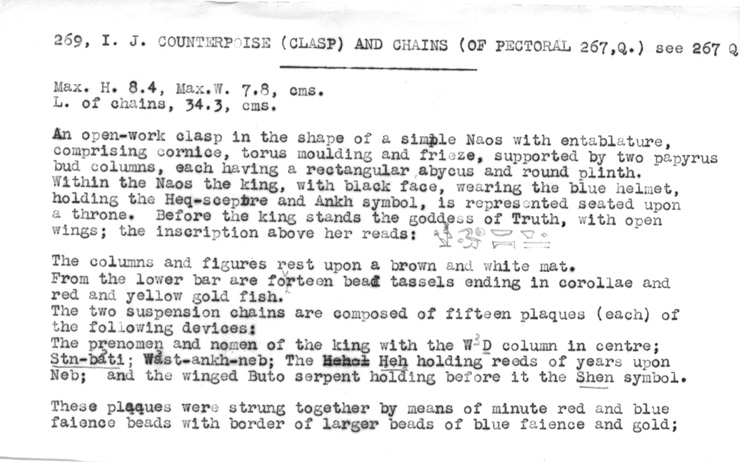Handlist description: Counterpoise (clasp) and chains of pectoral 267q
Card/Transcription No.: 269ij-1
269, I. J. COUNTERPOISE (CLASP) AND CHAINS (OF PECTORAL 267 ,Q.) See 267, QMax. H. 8.4, Max. W. 7.8, cms. L. of chains, 34.3, cms.
An open-work clasp in the shape of a simple Naos with entablature, comprising cornice, torus moulding and frieze, supported by two papyrus bud columns, each having a rectangular abacus and round plinth. Within the Naos the king, with black face, wearing the blue helmet, holding the Heq-sceptre and Ankh symbol, is represented seated upon a throne. Before the king stands the goddess of Truth, with open wings; the inscription above her reads: <>
The columns and figures rest upon a brown and white mat. From the lower bar are fourteen bead tassels ending in corollae and red and yellow gold fish. The two suspension chains are composed of fifteen plaques (each) of the following devices: The prenomen and nomen of the king with the W3D column in centre; Stn-ba'ti; Wast-ankh-neb; The Heh holding reeds of years upon Neb; and the winged Buto serpent holding before it the Shen symbol.
These plaques were strung together by means of minute red and blue faience beads with border of larger beads of blue faience and gold;
